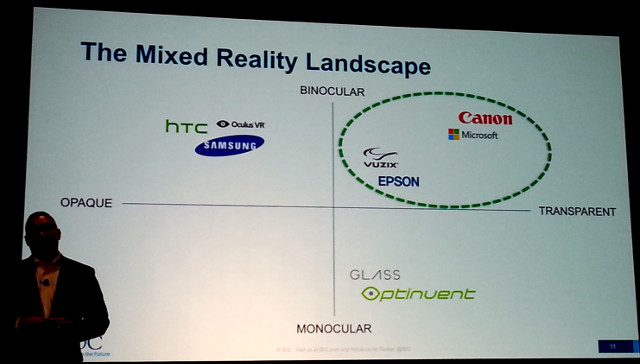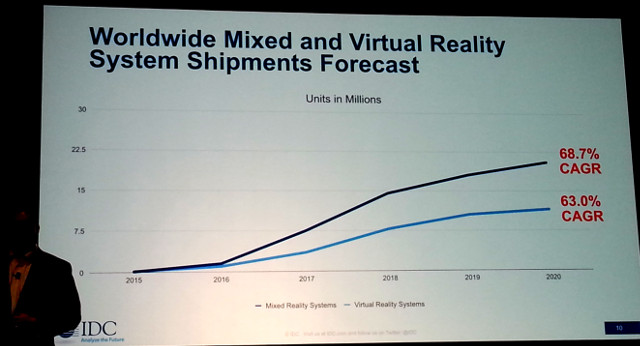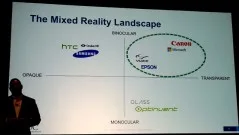IDC’s Ramon Llamas kicked off a special seminar session by defining mixed reality as the combination of augmented reality (virtual objects overlaid on a view of the real world), augmented virtuality (interaction with an AR environment) and virtual reality (completely immersed in video or CG content). However, in his slide showing the mixed reality landscape, he did not include monocular glance up/down type devices like Google Glass or the headset from Optinvent as mixed reality devices. For him, mixed reality requires binocular devices.

Mixed reality changes how products are designed, built and tested. As a result, Llamas sees mixed reality offering users the ability to shorten development cycles, reduce the cost of changes, increase the build time and reduce material costs.
Many vertical markets can benefit, but the near term high value markets include aerospace, architecture, automotive and manufacturing.
In his forecast, he showed growth curves for both mixed reality and virtual reality devices. In the chart below, the mixed reality unit shipments will exceed virtual reality headsets, with 2016 being the start year for such devices. The Microsoft Hololens headset will enter the market in the second half of 2016, he thinks, with 90-95% of mixed reality applications occurring in the enterprise space.


